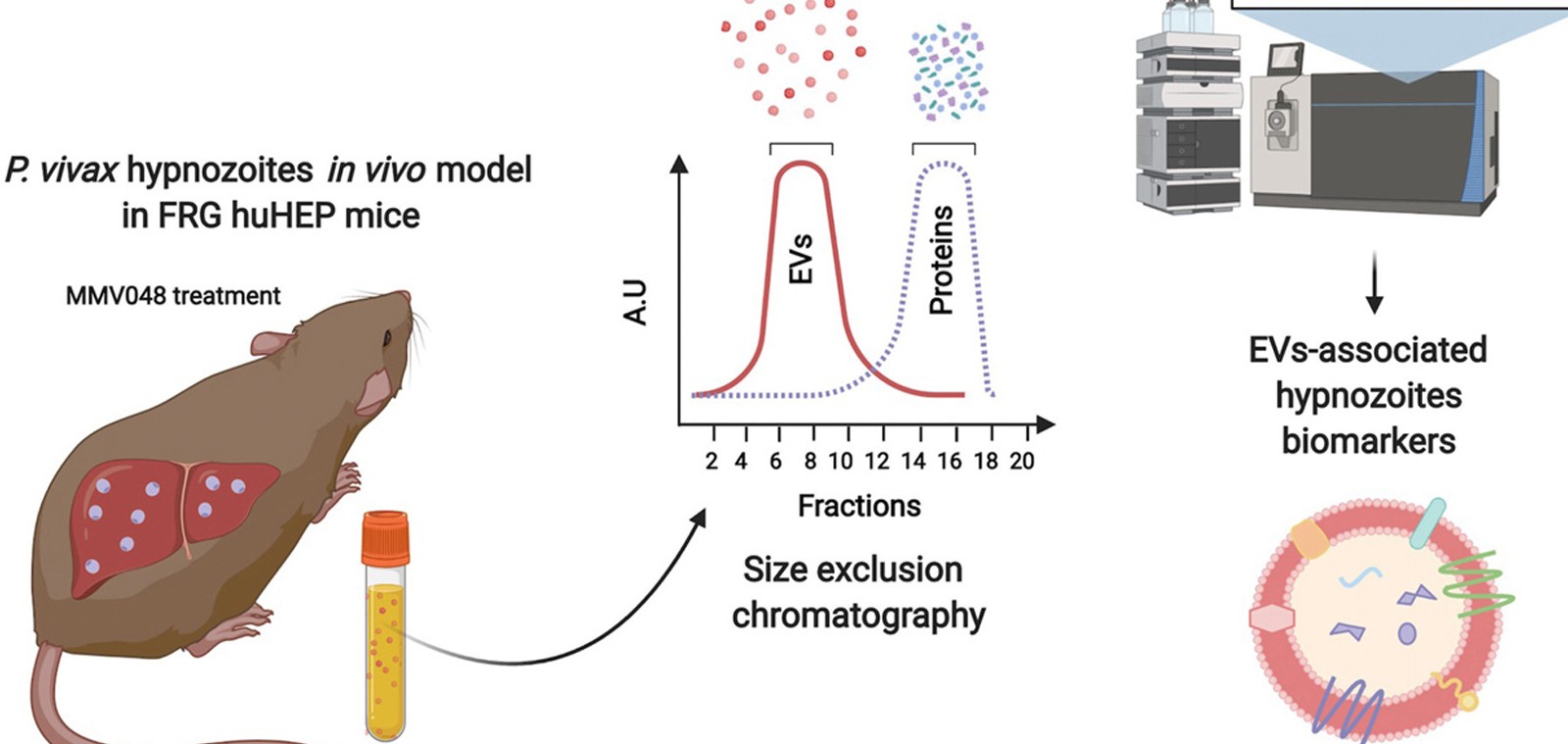Study Sets the Basis for Identifying Biomarkers of Latent Malaria Vivax Infections

A new study led by ISGlobal and IGTP uses a mouse model with human liver cells to characterize proteins associated with the latent form of the malaria parasite Plasmodium vivax. The findings lay the groundwork for identifying biomarkers of latent malaria vivax infections and moving forward in eliminating the disease.
Plasmodium vivax is the most widespread malaria parasite outside Africa. There are about 7 million cases of malaria vivax per year, and 2.5 million people worldwide live at risk of contracting the parasite. It is not as lethal as P. falciparum (endemic to Africa) but, unlike falciparum, P. vivax can adopt a latent form (hypnozoite) that hides in the liver and reactivates months or years later, causing relapses. In fact, these recurrent episodes are responsible for 90% of malaria vivax cases, and represent one of the main obstacles to eliminating the disease.
"Hypnozoites are clinically invisible and to date we have no markers to detect their presence" says Hernando del Portillo, ICREA researcher at ISGlobal and the IGTP (Plasmodium vivax and Exosome Research -PVREX- group), and coordinator of the study.
Using a mouse model transplanted with human liver cells and infected with P. vivax, the team led by del Portillo had already shown that small vesicles (exosomes) secreted by human cells and circulating in blood, contained parasite proteins that could serve as a marker of latent infections. "However, we were unable to distinguish specific biomarkers for hypnozoites because we also had another actively replicating form of the parasite (schizonts)," explains del Portillo. In this new study, the research team used an experimental drug (MMV048) that completely eliminates schizonts, which allows to obtain exosomes from human liver infected exclusively with hypnozoites.
By comparing the proteins in exosomes from mice untreated, treated with MMV048, or treated with a drug that eliminates all parasitic forms, the team identified a parasitic protein unique to hypnozoites. "The function of this protein in P. vivax is not yet known, but we now need to conduct further studies to determine whether it represents a potential biomarker of latent infections," explains Melisa Gualdrón-López, first author of the study. The analysis also identified several human proteins in the exosomes of infected mice, but none were unique to hypnozoite infections. The findings also indicate that, unlike schizonts, hypnozoites are immunologically silent; that is, they do not induce an inflammatory response from infected cells.
"The animal model used in this study lays the groundwork for identifying potential biomarkers of hypnozoite infections, and more generally, for discovering biological properties of liver infections in humans", says del Portillo.
Reference
Gualdrón-López M, Díaz-Varela M, Zanghi G, Aparici-Herraiz I, Steel RWJ, Schäfer C, Cuscó P, Chuenchob V, Kangwangransan N, Billman ZP, Olsen TM, González JR, Roobsoong W, Sattabongkot J, Murphy SC, Mikolajczak SA, Borràs E, Sabidó E, Fernandez-Becerra C, Flannery EL, Kappe SHI, Del Portillo HA. Mass Spectrometry Identification of Biomarkers in Extracellular Vesicles From Plasmodium vivax Liver Hypnozoite Infections. Mol Cell Proteomics. 2022 Oct 01;21(10):100406. DOI: 10.1016/j.mcpro.2022.100406. PMID: 36030044; PMCID: PMC9520272.
News shared with ISGlobal.
